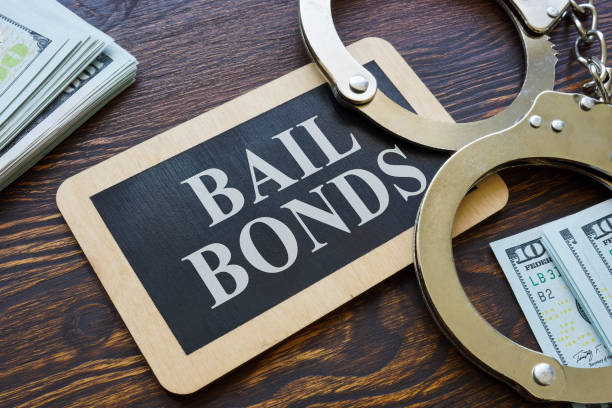Understanding the Fundamentals of Bail Bonds: What You Required to Know
Navigating the intricacies of bail bonds is an essential aspect of the lawful system that can dramatically influence the charged's trip via court process. A bail bond functions as an economic guarantee for the court, promoting temporary release from custodianship while waiting for test. The intricacies of how bail bonds operate, the different kinds readily available, and the essential factors to consider in selecting a credible bail bondsman can be daunting. Recognizing these components is vital, as the repercussions of missteps might lead to unpredicted issues that prolong much past the court. What are the essential elements that one must understand to successfully maneuver this procedure?
What Is Bail?
Bail is an economic plan that allows an individual charged of a crime to be launched from custody while awaiting test. The main function of bail is to ensure that the defendant shows up for future court process (Bail Bonds). Commonly set by a judge, the bail amount varies relying on the nature of the criminal activity, the accused's criminal background, trip risk, and various other important variables
When bail is approved, the charged or a representative needs to pay a defined sum, which might remain in cash or through a bail bond. Sometimes, bail can be denied altogether, particularly for major offenses or if the suspicious positions a considerable risk to public safety and security. The concept of bail is rooted in the anticipation of innocence, strengthening the concept that people must not be penalized prior to a sentence.

Comprehending Bail Bonds
A bail bond is a monetary tool that promotes the launch of a charged person from guardianship, functioning as a warranty for their look at future court days. This arrangement enables accuseds to preserve their flexibility while waiting for test, lowering the burdens related to imprisonment. The bail bond procedure usually involves a third-party business, known as a bond bondsman, that offers the essential funds to the court in support of the charged.
Bail bonds can be found in various forms, including guaranty bonds, residential or commercial property bonds, and money bonds, each with unique needs and implications. Guaranty bonds, one of the most usual type, call for an exceptional payment, typically a percent of the total bail amount, which is non-refundable. On the other hand, a building bond entails utilizing real estate as security, while money bonds necessitate the complete bail quantity to be paid in advance.
Understanding the subtleties of bail bonds is essential for defendants and their family members. It is important to understand the potential monetary implications, consisting of responsibilities and fees to the bail bondsmansman, as well as the lawful responsibilities linked to making sure court appearances. Understanding of these elements help in making notified choices during a challenging time.
Just How Bail Bonds Work
The process of protecting a bail bond typically entails several crucial steps that make certain the accused can restore their liberty while awaiting test. The specific or their representative contacts a bail bondsman, that analyzes the case and the associated risks. The bail bondsman will certainly call for details about the implicated, including the costs, the bail amount set by the court, and any type of pertinent personal details.
When the bail bondsman agrees to supply the bond, the implicated or their representative needs to pay a non-refundable charge, normally a percent of the total bail quantity. This cost makes up the bail bondsman for tackling the monetary threat of ensuring the charged shows up in court. Sometimes, security may also be required, such click over here now as property or beneficial properties, which Recommended Reading works as safety for the bond.
After any type of collateral and the charge are set up, the bondsman sends the essential documents to the court. Upon approval, the bail is published, and the accused is launched from guardianship. It is vital for the charged to comply with all court days and problems, as failure to do so can bring about the forfeit of the bond and potential lawful repercussions.
Kinds of Bail Bonds
Various kinds of bail bonds are readily available to match different conditions and requirements. The most usual type is the guaranty bond, where a bondsman warranties repayment of the complete bail total up to the court in exchange for a non-refundable cost, normally around 10% of the bail. This plan allows offenders to protect their launch without paying the entire bail upfront.
One more type is the money bond, which requires a co-signer or the defendant to pay the full bail quantity in cash directly to the court - Los Angeles Bail Bondsman. This alternative is commonly liked for lower bail quantities, as it makes certain the cash is returned upon the offender's appearance in any way court proceedings
Building bonds involve using realty as security. In this case, the court positions a lien on the home, which can be forfeited if the offender fails to show up.
Finally, federal bail bonds are especially made for federal situations, often involving higher quantities and added intricacies. Understanding these various bail bond types is vital for offenders and their families in making informed decisions during a difficult time.
Selecting a Bond Bail Bondsman
When picking a bondsman, it is necessary to consider several essential elements that can affect the general experience and result. Review the bail bondsman's track record by looking into on the internet evaluations and acquiring recommendations from trusted sources. A reputable bail bondsmansman will have a history of professionalism and reliability and successful cases.

It is also vital to understand the cost structure. Many bail bondsmensman bill a non-refundable charge, normally around 10% of the bail amount. Be wary of any kind of concealed charges or unusual settlement methods. Transparency in pricing is a characteristic of a reliable bondsman.
Verdict
Bail serves as an economic assurance of court look, while various kinds of bail bonds cater to various situations. Recognizing the functional mechanisms of bail bonds and picking a respectable bail bondsman can significantly affect the total experience.
The intricacies of exactly how bail bonds run, the various types offered, and the critical considerations in choosing a trusted bail bondsman can be discouraging. The bail bond process normally entails a third-party firm, recognized as a bail bondsman, that gives the necessary funds to the court on behalf of the accused.
The most common type is the surety bond, where a bail bondsman guarantees repayment of the full bail amount to the court in exchange for a non-refundable charge, commonly around 10% of the bail. Bail offers as an economic guarantee of court look, while numerous kinds of bail bonds provide to various conditions. Understanding the operational mechanisms of bail bonds and picking a trusted bail bondsman can considerably influence the overall experience.